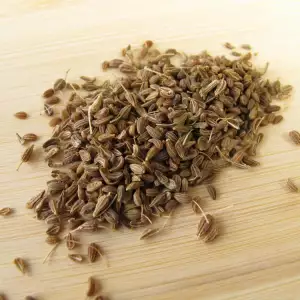There's an old Greek maxim and we can't help but agree with it. It says that Ouzo makes the spirit. The Greek spirit lies in the hearty food, soulful music and love of lively conversation in friendly company. A glass of chilled Ouzo is the perfect companion to all these pleasant sides of life.
Consuming the anise drink in Greece is a whole art. This ritual goes with the image of the warm summer sun, the sight of the azure sea stretching to the horizon and the table placed where the sounds of the sea can be heard.
Most people agree that Ouzo is the most popular alcoholic drink in Greece. No other drink is more associated with Greece than Ouzo, because it is Greek to the fullest.
In 2006, the Greek government won the exclusive rights to use the name of the product. For sure, lovers of the most Greek drink will be interested to learn more about it.
History of Ouzo
Ouzo is derived from an alcoholic drink known as tsipouro, which is believed to have been invented by the monks of Athos in the 14th century.
The drink is prepared from grapes. One of the variations of tsipouro is flavored with anise. This particular variation is known as Ouzo.

In Greek it is spelled ούζο and pronounced Ouzo, known as an anise-flavored alcoholic drink. An ideal alcohol choice for lovers of licorice-type aromas and anise is from the same plant family.
Ouzo is made from fermented grapes that are first distilled into something like grappa. The second boiling gives it an anise aroma and produces a drink with a mild and sweet taste, with an alcohol content of about 40 percent.
The taste of pure Ouzo is strong. It has a pronounced aroma of fennel, cloves and coriander. They are dominant. Like other anise drinks such as Sambuca and Absinthe, the alcoholic drink is usually diluted with water, resulting in a white color and sometimes a bluish tint. It is drunk in a small, narrow glass, so that the alcoholic vapors cannot be felt.
Another important feature is that it does not go without appetizers. These are olives, Greek salad or bread with dip, fish or feta cheese.
The current version became known at the beginning of the 19th century. The first enterprise for the production of Ouzo dates back to 1856. After absinthe began to be considered negative for health, Greek mastic took the place vacated by it.
On October 26, 2006, Ouzo was celebrated as a completely Greek drink. It is a drink of protected origin, along with other typically Greek drinks.
Manufacturing method of Ouzo
The main ingredients of Ouzo are the grape pomace left over after winemaking, including the skins. Ouzo must be made with at least 30 percent grape pomace. Cereals, potatoes or some fruit are added to them.
In large copper vessels the grapes undergo distillation to turn into alcohol. In some productions, where it is worked in an authentic way, dough is placed on the neck of the copper cauldron, which expands when heated and this way it closes the cauldron tightly. The distillation process is repeated, but this time the aromas are added.
Anise is an integral part of the flavor spectrum, but depending on the manufacturer, other ingredients such as fennel, nutmeg and cloves may be added. The resulting drink is bottled and offered for consumption.
The qualities of the drink come from the properties of the herbs that are used to flavor the drink, such as cinnamon, anise, rosemary, coriander and other herbs, mostly depending on the region where it is produced.
Taste qualities and consumption of Ouzo
The clear and silky taste is a distinctive feature of Ouzo, with a pronounced sweet aftertaste. The taste can be described as strong and fiery and is not a drink for the faint of heart.
Ouzo is often called an aperitif, although Greeks consume it on special occasions. The bottle of ouzo arrives at the table in the late afternoon or early evening, in the company of the company's preferred appetizers and snacks. In Greece, there are special ouzo bars where you order your favorite ouzo and appetizer combination.
Ouzo Brands

Ouzo has the status of a controlled drink by the country. The Greeks keep their patent and the name can only be used if it is made in Greece. According to the regions of production, ouzo brands are also defined, the most famous of which are the following:
1. Ouzo Plomari
This brand is known for high quality and is the only one with a cork stopper. The distinctive feature is the intense anise aroma of the drink. Its taste is a combination of density and delicacy. Anise seed is used for its production, combined with the aromatic seeds and herbs characteristic of the island of Lesvos where it is made. For the aroma and undoubted quality of this type of ouzo, the main culprit is the anise, which is grown in certified fields. The distillation of Plomari ouzo takes place in handmade copper vessels, making it one of the most preferred brands.
2. Ouzo Mattarelli
The unique taste of this ouzo is contributed not only by the exceptional quality of the anise, which the producers immerse in the sea before distillation, but also by Mytilini honey, which is used instead of sugar. The olive wood fire and manual bottling also play a role in the quality of the drink. Mattarelli ouzo is available in 200 milliliter mini bottles shaped like a flask;
3. Ouzo Barbayanni
This brand bears the name of its discoverer - Eustathios Barbayannis, who in 1860 created his own distillery. Over the years, different types of Barbayanni ouzo have been created;
4. Ouzo 12
The history of the drink dates back to 1880, when it was made for the first time in the Kaloyanis brothers' distillery from barrel number 12. It is characterized by its unique taste and aroma and is one of the most preferred anise drinks.
When choosing Ouzo, it is recommended to choose selected brands, which guarantees the quality of the drink.
Ouzo - a healthy drink and a cure for health problems
Ouzo can be used as an antiseptic because of its alcohol levels. Headaches and flu are well treated with a warm ouzo drink before bed.
Most Greeks use Ouzo at an early age when they suffer from toothache. According to folk medicine, it is good to rub with Ouzo for muscle and joint pains and the drink mixed with honey is recommended for menstrual pains.
In the region of Macedonia, in ancient times, people would take a woolen cloth, dip it in ouzo, then heat it for a minute with a heated iron and place the piece of cloth on the abdomen of the sick person.
Ouzo even helped with asthma, by making a compress with Ouzo and paprika, which they put on the sick person's chest.
Getting drunk with Ouzo
Getting drunk with Ouzo is bad, it gives a bad hangover. In small quantities, these drinks are healthy, especially if a person has stomach or abdominal pain. For them, the anise essential oils have a healing and anesthetic effect. But in amounts above 200-300 grams, there can be bad consequences, with all the known hangover extras.

















Comments